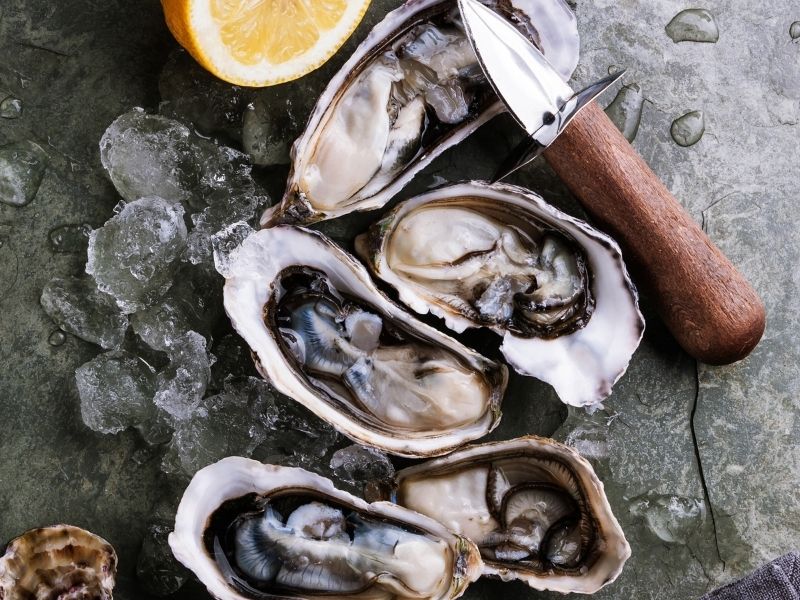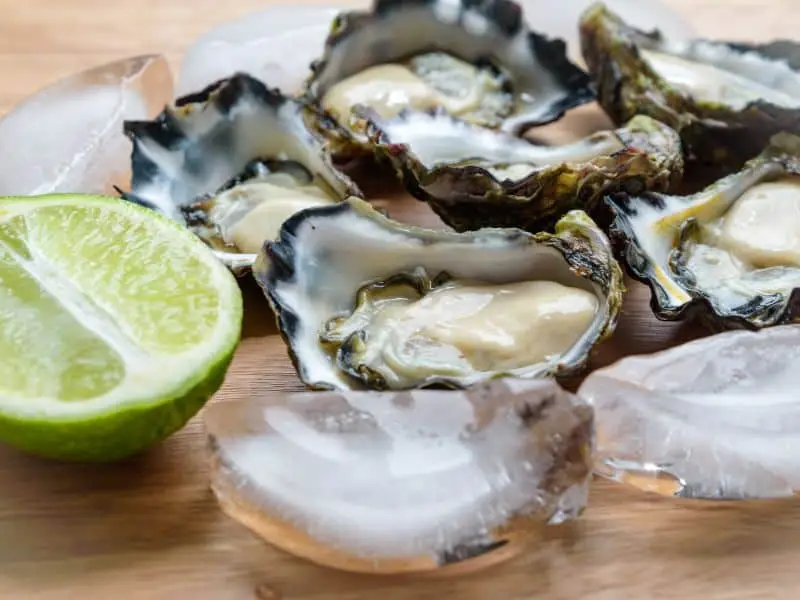Oysters are a popular seafood delicacy, and they come in different sizes and quantities. As a seafood lover, you may have heard of the term “peck of oysters,” but you’re not sure what it means. You may be wondering, how many oysters are in a peck? Or, how much is a peck of oysters?
A peck of oysters is a unit of measurement used to quantify oysters. It is equivalent to 1/4 of a bushel or 2 gallons (8 quarts) of seafood. The exact number of individual oysters in a peck can vary depending on the size, but typically it’s around 30-50 large ones.

A peck of oysters is typically enough to feed two people generously with leftovers, making this an ideal portion size for those who love oysters.
Background
Before we dive into what a peck of oysters is, let’s first understand what a peck is. A peck is a unit of measurement commonly used in the United States to measure dry goods, such as grains, fruits, and vegetables. It is equivalent to 8 quarts or 2 gallons. It is also used to measure other commodities such as coal, cement, and oysters.

Where to Buy
The cost of a peck of oysters can vary depending on the location and the vendor. You can typically find them at seafood markets, grocery stores, and restaurants that serve seafood.
Prices can range from $20 to $50 or more depending on the type of oysters and the location. It’s best to check with your local vendor or restaurant to get the most up-to-date pricing information.

How to Prepare and Cook
There are many ways to prepare and cook a peck of oysters, depending on your preference.
Preparing
To prepare a peck of oysters, you will need to clean them first. Rinse them under cold water to remove any dirt or debris. You can then shuck them (remove the shell) and serve them raw with lemon wedges and cocktail sauce, or you can cook them in a variety of ways, such as frying, grilling, or broiling.
Oysters are versatile seafood that can be enjoyed in many different dishes, such as oyster stew, oyster po’boys, and oyster Rockefeller.
Cooking
Here are a few popular methods:
- Raw: You can shuck the oysters and serve them raw with lemon wedges and cocktail sauce.
- Fried: Dredge the shucked oysters in flour, then dip them in beaten eggs and coat them in breadcrumbs. Fry them in hot oil until they are golden brown.
- Grilled: Shuck the oysters and place them on a grill heated to 450 degrees. Top each oyster with a pat of butter and a sprinkle of chopped herbs, then close the grill or cover with tin foil.
- Broiled: Shuck the oysters and place them on a baking sheet. Top each oyster with a mixture of breadcrumbs, butter, and herbs, then broil them in the oven until they are golden brown.
- Steamed: Place the shucked oysters in a steamer basket and steam them for 5-7 minutes until they open. Serve them with melted butter and lemon wedges.

FAQs
How do you store a peck of oysters?
To store a peck of oysters, put them in a bowl, cover them with a damp towel, and place them in the refrigerator. Do not store them in an airtight container or in water.
What is a peck of shellfish?
A peck of shellfish is equivalent to 1/4 of a bushel or 2 gallons (8 quarts) of seafood. The exact number of individual shellfish in a peck can vary depending on the size of the shellfish. For example, a peck of clams can contain around 50-60 clams, while a peck of oysters can contain around 30-50 large oysters.
How many come in a bushel of oysters?
According to the sources I found earlier, a bushel of oysters typically contains between 100-150 individual oysters, depending on their size. However, the exact number can vary depending on the type of oysters and the location where they were harvested.
How many oysters are in a pint?
AGenerally, there are around 50 oysters in a standard pint, but this can vary between 40 and 60 depending on the size of the oysters. It’s best to ask your local seafood purveyor for a more exact answer.












